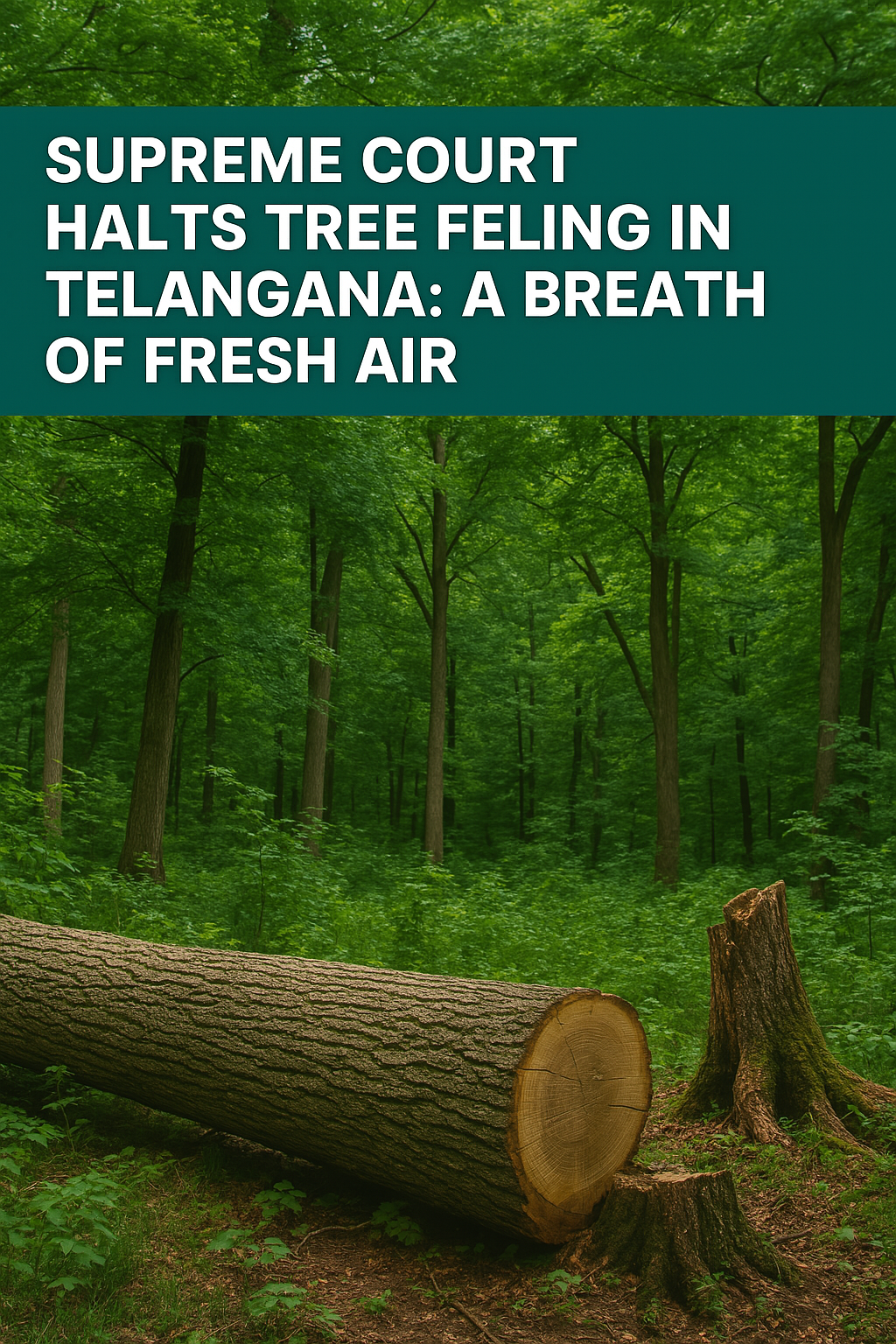Environmental laws at Cook Islands
The Cook Islands, a self-governing territory in free association with New Zealand, has a range of environmental laws and policies aimed at conserving its unique ecosystems, managing natural resources, and promoting sustainable development. Given its small island nature, the Cook Islands faces significant environmental challenges, such as coastal degradation, pollution, climate change impacts, and biodiversity loss. As a result, the Cook Islands has developed various laws and regulations to protect its environment.
Here are some of the key environmental laws and regulations in the Cook Islands:
1. The Environment Act 2003
Objective: The Environment Act 2003 is the primary environmental legislation in the Cook Islands. It provides the legal framework for environmental management, protection, and sustainable use of resources.
Key Features:
Environmental Impact Assessments (EIA): The Act requires that an environmental impact assessment (EIA) be conducted for projects or activities that may have significant environmental effects, such as large-scale development or infrastructure projects.
Environmental Protection: It addresses various environmental issues, such as pollution control, waste management, and the preservation of ecosystems.
Establishment of the Environment Service: The Act establishes the Environment Service, which is responsible for implementing environmental policies, conducting monitoring, and enforcing the law.
Pollution Control: The Act includes provisions for managing pollution from industrial, agricultural, and domestic sources, including noise, waste, and hazardous substances.
2. The Marine Resources Act 2005
Objective: The Marine Resources Act is crucial for the management and conservation of marine resources, which are vital to the Cook Islands' economy and cultural heritage.
Key Features:
Sustainable Fisheries Management: The Act establishes regulations for the sustainable management of marine resources, including fish stocks and coral reefs, ensuring that overfishing and destructive fishing practices are controlled.
Licensing and Quotas: It regulates commercial fishing by setting up licensing systems and fishing quotas to prevent overexploitation of marine resources.
Protection of Marine Biodiversity: The law includes provisions to protect marine biodiversity, including regulations on coral reef conservation and the prohibition of harmful activities such as blast fishing.
Marine Protected Areas (MPAs): The Act allows for the establishment of MPAs to conserve and protect critical marine habitats, such as coral reefs, seagrass beds, and fish spawning areas.
3. The National Environment Strategy (NES)
Objective: The National Environment Strategy (NES) provides a strategic framework for guiding the Cook Islands' environmental management efforts, focusing on sustainable development and environmental conservation.
Key Features:
Sustainable Development Goals (SDGs): The NES aligns with the United Nations' SDGs, especially those related to marine conservation, climate action, and biodiversity protection.
Climate Change Adaptation: It addresses climate change impacts, particularly the threats posed by rising sea levels, extreme weather events, and ocean acidification.
Integration of Environmental and Economic Policies: The strategy emphasizes the integration of environmental concerns into national development policies to promote green growth, sustainable tourism, and resource conservation.
Public Awareness and Participation: The NES encourages the active involvement of local communities in environmental management and conservation efforts, ensuring that traditional knowledge and practices are incorporated into decision-making.
4. The Conservation Area Act 2002
Objective: The Conservation Area Act was introduced to provide a legal basis for the establishment and management of protected areas in the Cook Islands, including land and marine areas.
Key Features:
Conservation Areas: The Act allows for the creation of conservation areas to protect unique ecosystems, endangered species, and important habitats. These areas can include terrestrial and marine zones.
Community Involvement: The law promotes community involvement in the management of conservation areas, allowing local communities to take an active role in protecting their natural heritage.
Biodiversity Protection: The Act aims to protect biodiversity by establishing areas that are off-limits to development or destructive activities, such as logging, mining, and fishing.
Ecotourism: It encourages sustainable ecotourism initiatives in conservation areas, promoting economic opportunities while protecting natural resources.
5. The Resource Management Act 2007
Objective: The Resource Management Act governs the sustainable use of land and natural resources in the Cook Islands. It provides a framework for land use planning, zoning, and environmental impact assessments.
Key Features:
Land Use Regulation: The Act regulates land use to prevent overexploitation and degradation of natural resources, including soil erosion, deforestation, and habitat destruction.
Environmental Permits: It establishes a system for issuing permits for activities that may affect the environment, such as construction, mining, and agriculture.
Sustainable Resource Use: The law encourages the sustainable use of natural resources, including freshwater, forests, and minerals, and ensures that resource extraction does not harm the environment or local communities.
Community Engagement: The Act emphasizes the need for public consultation and community involvement in resource management decisions.
6. The Waste Management Act (Draft)
Objective: The Waste Management Act focuses on improving waste management practices in the Cook Islands, addressing issues like pollution, landfill use, and recycling.
Key Features:
Waste Reduction: The Act encourages waste minimization and the promotion of recycling and reuse, reducing the amount of waste sent to landfills.
Pollution Control: It includes regulations on the disposal of hazardous waste, ensuring that harmful substances do not contaminate land, water, or air.
Waste Management Facilities: The law regulates the construction and operation of waste disposal sites, landfills, and recycling centers.
Public Awareness: The Act promotes public education on responsible waste disposal and the importance of environmental protection.
7. The Climate Change Act (Draft)
Objective: The Climate Change Act is a proposed law to address the impacts of climate change in the Cook Islands, particularly in terms of adaptation and resilience building.
Key Features:
Climate Change Mitigation: The law encourages the reduction of greenhouse gas emissions through energy efficiency, renewable energy adoption, and low-carbon development strategies.
Climate Resilience: It includes measures to improve the resilience of infrastructure, agriculture, and coastal areas to climate change impacts such as sea-level rise, storms, and droughts.
Climate Adaptation Planning: The Act outlines a framework for developing and implementing climate adaptation plans at national and local levels.
International Cooperation: The Cook Islands is a party to the Paris Agreement, and the Climate Change Act aims to support its commitments to reducing emissions and adapting to global warming.
8. The Biodiversity Act (Draft)
Objective: The Biodiversity Act aims to conserve the unique biodiversity of the Cook Islands, including its endemic species of plants and animals.
Key Features:
Conservation of Endemic Species: The law aims to protect endemic species of flora and fauna that are found only in the Cook Islands.
Habitat Protection: It includes provisions for the protection of important habitats, such as forests, wetlands, and marine ecosystems, that are critical for biodiversity.
Invasive Species Management: The Act includes measures to prevent the introduction and spread of invasive species, which pose a significant threat to native ecosystems.
Collaboration with International Bodies: The Cook Islands collaborates with international organizations to implement biodiversity conservation programs and participate in global conservation initiatives.
Enforcement and Institutions
The Environment Service: The Environment Service is responsible for enforcing environmental laws in the Cook Islands. It monitors environmental quality, conducts environmental assessments, and ensures compliance with regulations.
The Ministry of Infrastructure and Planning: This ministry oversees land use, resource management, and urban planning, working closely with the Environment Service to ensure sustainable development.
Local Governments: Local councils in the Cook Islands play a role in implementing environmental policies and managing local resources.
Challenges and Developments
Climate Change: As a small island state, the Cook Islands is highly vulnerable to the impacts of climate change, such as rising sea levels, increased cyclone intensity, and coastal erosion. This makes climate resilience a top priority in environmental laws.
Resource Management: Overfishing, land degradation, and pollution are ongoing issues, especially as the population grows and tourism increases. Effective management of natural resources is critical to maintaining sustainability.
Public Engagement: Ensuring that local communities are engaged in environmental protection efforts remains a challenge, though there has been significant progress in integrating community knowledge into conservation initiatives.
Conclusion
The Cook Islands has developed a robust legal framework to address a wide range of environmental challenges, from marine and land resource management to climate change adaptation. The country’s environmental laws are designed to promote sustainable development, conserve biodiversity, and ensure the protection of the natural environment for future generations. As the Cook Islands continues to face the realities of climate change and resource pressures, strengthening environmental governance and encouraging community participation will be key to ensuring long-term sustainability.




























0 comments